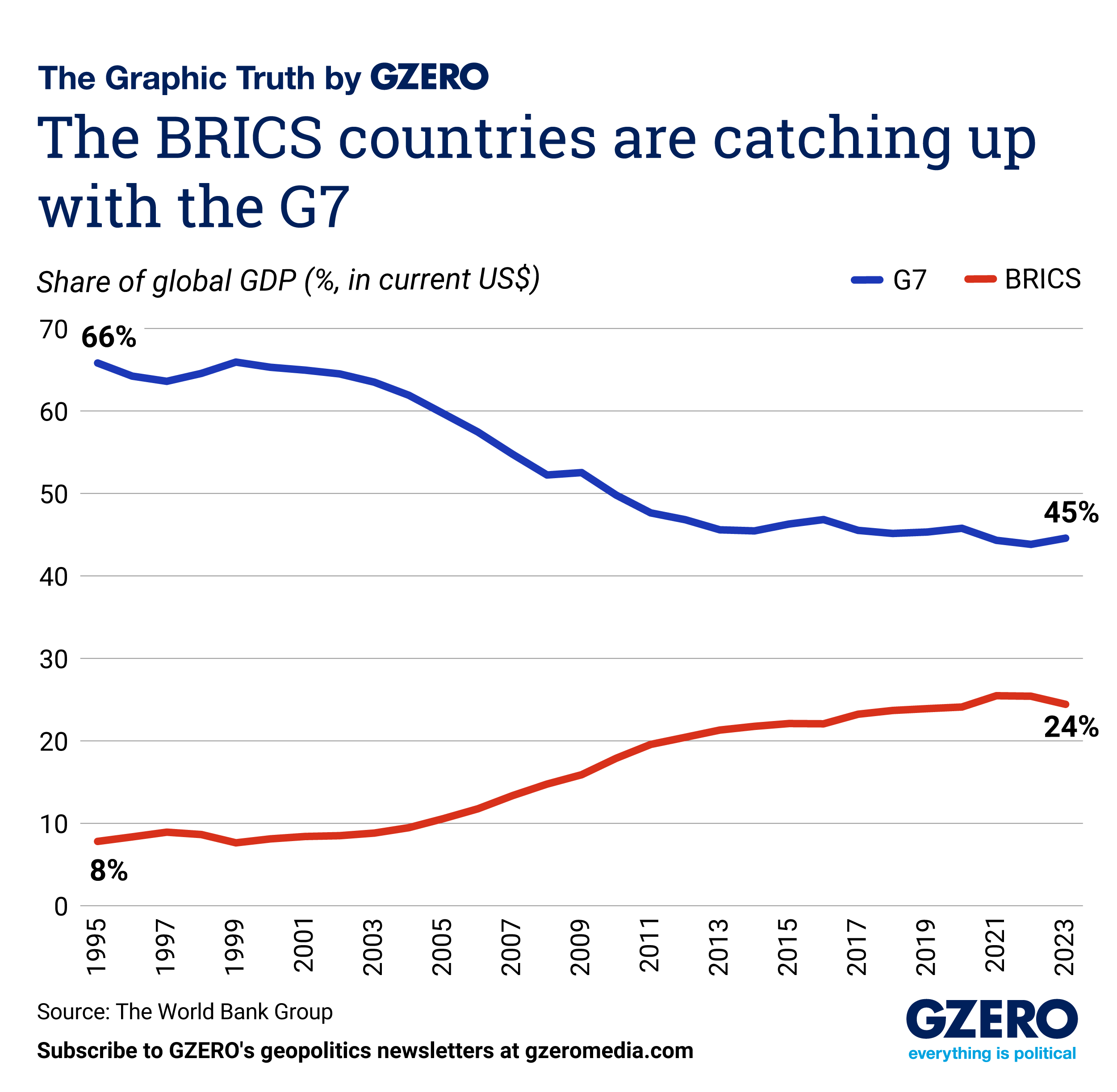and
June 13, 2025
The G7 countries – the US, UK, Canada, Germany, France, Italy and Japan – will convene this weekend in Kananaskis, a rural town in the mountains of Alberta, Canada. High on the meeting’s agenda are tariffs, artificial intelligence, and international security, with special focus on Russian sanctions and Israel’s recent attacks on Iran.
While the G7 was originally formed as an informal grouping of the world’s wealthiest democracies, the BRICS – composed of Brazil, Russia, India, China, South Africa – have sought to challenge their dominance of the global agenda.
Here’s a look at how the share of the global economy held by G7 and BRICS nations has evolved over time.
More For You
- YouTube
Wikipedia cofounder Jimmy Wales explains why a specific page titled “The Gaza Genocide” risks undermining trust with users.
Most Popular
Can we still trust Wikipedia in an age of polarization and AI? Cofounder Jimmy Wales joins Ian Bremmer to explain why millions still do.
Can we still trust Wikipedia in an age of polarization and AI? Cofounder Jimmy Wales joins Ian Bremmer to explain why millions still do.
We can't really agree on anything, except for Wikipedia.
- YouTube
In 2025, GZERO’s Global Stage coverage highlighted a recurring theme: artificial intelligence is transforming every corner of the globe.
- YouTube
It's one of the few sources Americans across the political spectrum still rely on.
© 2025 GZERO Media. All Rights Reserved | A Eurasia Group media company.
